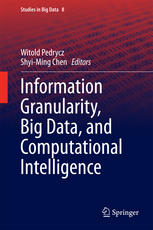

Most ebook files are in PDF format, so you can easily read them using various software such as Foxit Reader or directly on the Google Chrome browser.
Some ebook files are released by publishers in other formats such as .awz, .mobi, .epub, .fb2, etc. You may need to install specific software to read these formats on mobile/PC, such as Calibre.
Please read the tutorial at this link: https://ebookbell.com/faq
We offer FREE conversion to the popular formats you request; however, this may take some time. Therefore, right after payment, please email us, and we will try to provide the service as quickly as possible.
For some exceptional file formats or broken links (if any), please refrain from opening any disputes. Instead, email us first, and we will try to assist within a maximum of 6 hours.
EbookBell Team

4.8
104 reviewsThe recent pursuits emerging in the realm of big data processing, interpretation, collection and organization have emerged in numerous sectors including business, industry and government organizations. Data sets such as customer transactions for a mega-retailer, weather monitoring, intelligence gathering, quickly outpace the capacities of traditional techniques and tools of data analysis. The 3V (volume, variability and velocity) challenges led to the emergence of new techniques and tools in data visualization, acquisition, and serialization. Soft Computing being regarded as a plethora of technologies of fuzzy sets (or Granular Computing), neurocomputing and evolutionary optimization brings forward a number of unique features that might be instrumental to the development of concepts and algorithms to deal with big data.
This carefully edited volume provides the reader with an updated, in-depth material on the emerging principles, conceptual underpinnings, algorithms and practice of Computational Intelligence in the realization of concepts and implementation of big data architectures, analysis, and interpretation as well as data analytics. The book is aimed at a broad audience of researchers and practitioners including those active in various disciplines in which big data, their analysis and optimization are of genuine relevance. One focal point is the systematic exposure of the concepts, design methodology, and detailed algorithms. In general, the volume adheres to the top-down strategy starting with the concepts and motivation and then proceeding with the detailed design that materializes in specific algorithms and representative applications. The material is self-contained and provides the reader with all necessary prerequisites and augments some parts with a step-by-step explanation of more advanced concepts supported by a significant amount of illustrative numeric material and some application scenarios to motivate the reader and make some abstract concepts more tangible.